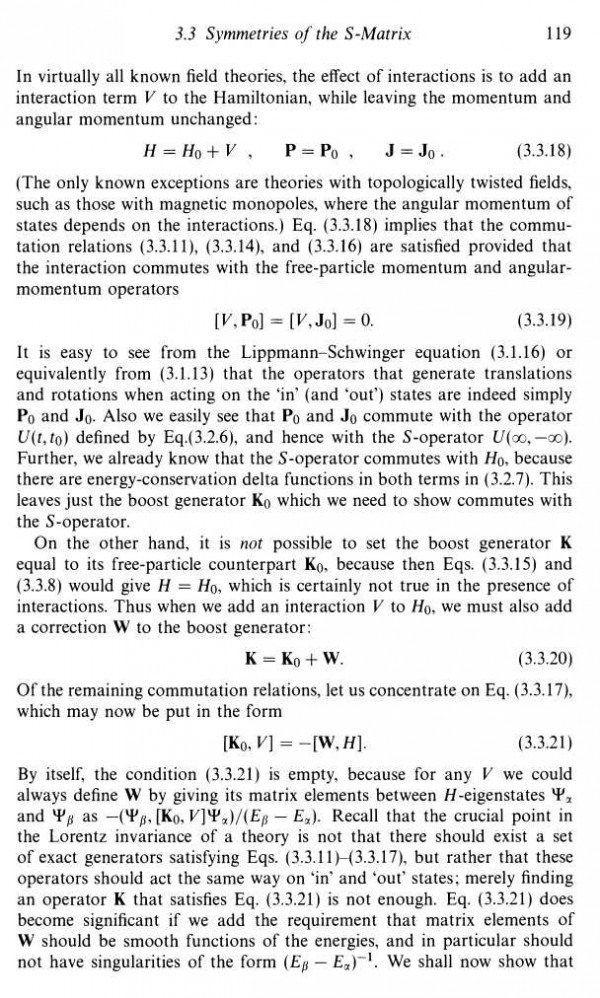In p. 119 (as shown below) of Weinberg's field theory book 1, he wants to illuminate that the following commutation relations will give some restrictions on the Hamiltonian $H$ of the interacting system.
$$
[H_0,S] = [\mathbf P_0,S] = [\mathbf J_0,S] = [\mathbf K_0,S] = 0
$$
He finds that the first three commutation relations require two restrictions:
$$
H=H_0+V, \quad \mathbf P = \mathbf P_0, \quad \mathbf J = \mathbf J_0,
$$
$$
[V,\mathbf P_0] = [V, \mathbf J_0]=0.
$$
The last commutation relations require four restrictions:
\begin{align}
H &= H_0+V \\
\mathbf K &= \mathbf K_0 +\mathbf W,\\
\mathbf [K_0,V] &= -[\mathbf W,H],
\end{align}
and $W$ is smooth.
I know that we can construct $H$ satisfying the first group requirement easily. My question is how do we construct $H$ satisfying the second group requirement: $K=K_0+W$ and $W$ must satisfy the condition $[K_0,V]=−[W,H]$?
====================

 Q&A (4848)
Q&A (4848) Reviews (202)
Reviews (202) Meta (439)
Meta (439) Q&A (4848)
Q&A (4848) Reviews (202)
Reviews (202) Meta (439)
Meta (439)